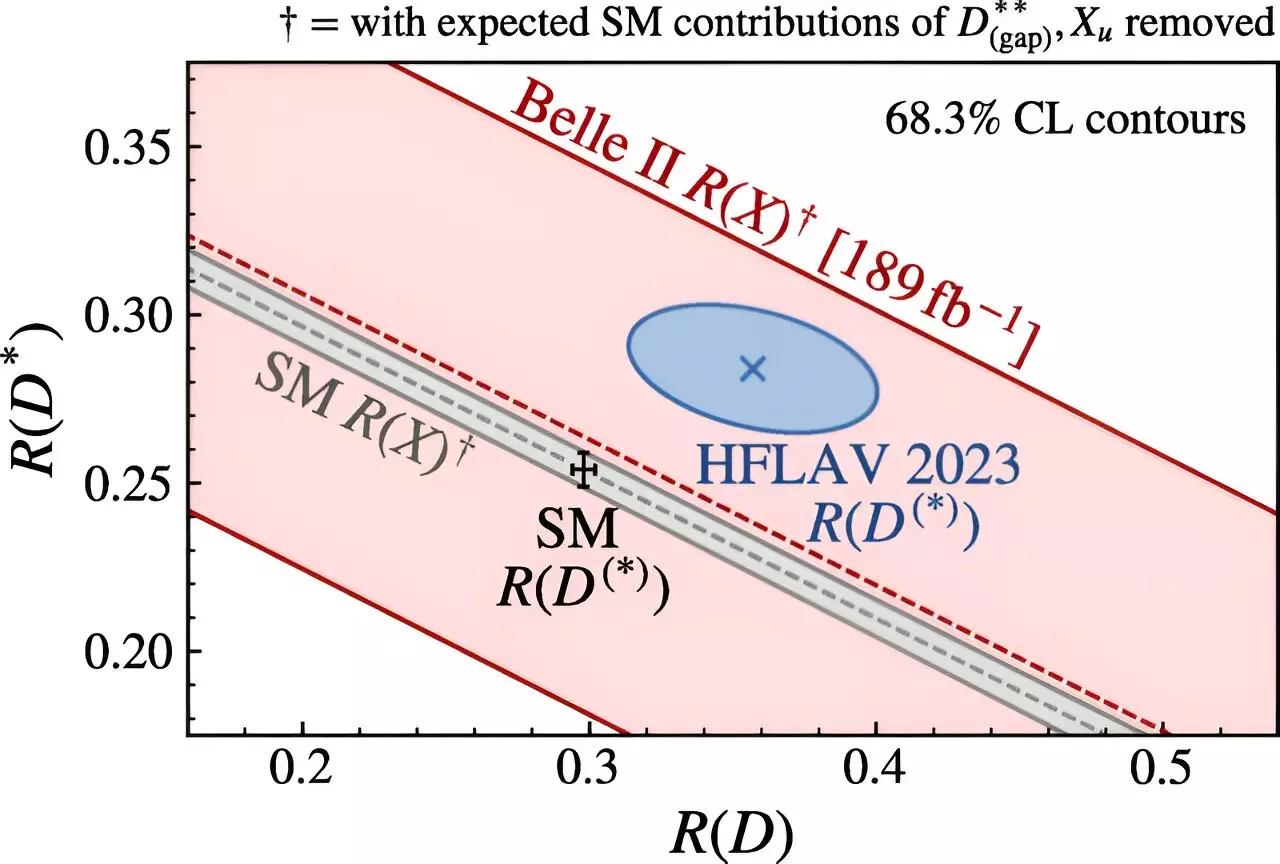In the ever-expanding frontier of particle physics, the Belle II experiment stands out as an ambitious initiative aimed at pushing the boundaries of our understanding of fundamental interactions. Based at the High Energy Accelerator Research Organization (KEK) in Tsukuba, Japan, this experiment harnesses the power of the SuperKEKB particle collider and the sophisticated Belle II detector. The core objective is to delve deep into weak interaction parameters, investigate exotic hadrons, and potentially identify phenomena beyond the current paradigm established by the Standard Model of particle physics.
A recent groundbreaking publication from the Belle II Collaboration in *Physical Review Letters* reported the first direct measurement of the tau-to-light-lepton branching ratio in B-meson decays, a development that is as crucial as it is intriguing. This finding not only serves to validate the framework of charged lepton interactions but also poses a formidable challenge to the universality that the Standard Model predicts. If lepton universality—a principle asserting that electrons, muons, and taus interact identically with weak and electromagnetic forces—is found to be violated, it would signal the existence of new physics that operates outside our current understanding.
Significance of the Tau Lepton
The focus on the tau lepton as a subject of intense scrutiny emerges from an inconsistency observed in previous measurements compared to theoretical predictions. As Karim Trabelsi, spokesperson for the Belle II Collaboration, articulates, this tension is indispensable for advocates of new physics. It’s an open invitation to challenge the extant theories that have governed our understanding since the advent of quantum mechanics. By rigorously measuring the tau-to-light-lepton ratio, this study seeks to illuminate the discrepancies between observed values and theoretical expectations.
The unique role of the tau lepton—heavier than both the electron and muon—makes it a valuable component of their investigation. Previous analyses primarily targeted decay processes where the lepton in question was paired with a single charmed meson. In contrast, the recent Belle II measurement was inclusive, encompassing scenarios involving multiple hadrons, thereby broadening the scope of their inquiry.
Innovative Methodologies in Measurement
The methodological approach taken by the Belle II Collaboration is a testament to the creative ingenuity prevalent in contemporary particle physics. Their analysis hinged on reconstructing events from B meson pairs emerging from collisions, a strategy that allowed them to track the path of leptons emerging from tau decays. By measuring properties such as lepton momentum and utilizing variables related to missing energy, they were able to differentiate between prompt lepton emissions and those derived from tau decay—a feat that relies heavily on advanced computational techniques and powerful algorithms.
The challenge, however, lies in managing the background noise from other processes that could skew their measurements. Trabelsi emphasizes the pivotal role of calibrating background conditions using auxiliary data samples rich in known processes. This step is crucial, as it significantly improves the precision of their results, even if it introduces a degree of systematic uncertainty. Nevertheless, as more data is amassed, the collaboration is optimistic about refining these measurements, which will bolster their credibility and significance.
A Future Full of Potential
The implications of Belle II’s findings reverberate beyond their immediate results. As researchers continue to accumulate data, there lies the potential for more refined analyses that could either cement the existing alignment with Standard Model predictions or reveal cracks in its foundation. Every new measurement taken at Belle II could serve as a stepping stone toward unmasking hidden particles or interactions that could dramatically reshape our theoretical frameworks.
Moreover, the strategy of combining inclusive and exclusive decay studies enriches the conversation surrounding lepton universality significantly. While the theoretical predictions for these different types of decays present stark contrasts, they serve as complementary tools in the broader investigation into fundamental particle interactions. The collaborative effort at Belle II promises not just a reiteration of existing knowledge, but rather a thorough examination of the fabric of the universe itself, challenging well-established paradigms and encouraging innovative thinking among physicists.
Watching the progress of Belle II and the discoveries it continues to unearth is an exhilarating journey—one that serves as a reminder of the dynamic and ever-evolving nature of scientific inquiry. With each experiment, we inch closer to uncovering profound truths about the universe, truths that could either confirm the elegance of the Standard Model or propel us into a new scientific era defined by discoveries yet to be made.


Leave a Reply